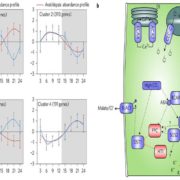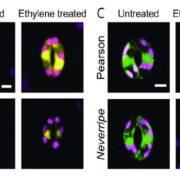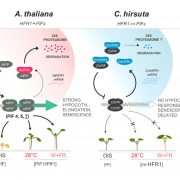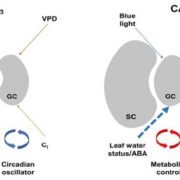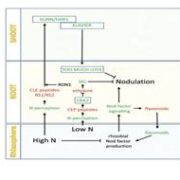Pivotal roles of cryptochromes 1a and 2 in tomato development and physiology (Plant Phys)
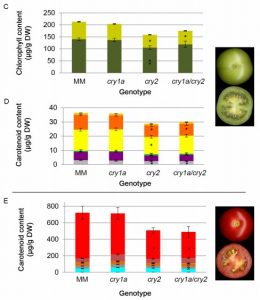 Cryptochromes are a class of flavoproteins found in plants and animals that are sensitive to blue light. In Arabidopsis, cryptochromes are involved in many important physiological processes including de-etiolation, flowering, circadian rhythms, cotyledon opening and expansion, anthocyanin accumulation, and root growth. In economically important crops, these photoreceptors could be manipulated to influence horticultural traits such as flowering time and fruit quality. In tomato, cryptochromes are encoded by a multi-gene family, comprising CRY1a, CRY1b, CRY2 and CRY3.
Cryptochromes are a class of flavoproteins found in plants and animals that are sensitive to blue light. In Arabidopsis, cryptochromes are involved in many important physiological processes including de-etiolation, flowering, circadian rhythms, cotyledon opening and expansion, anthocyanin accumulation, and root growth. In economically important crops, these photoreceptors could be manipulated to influence horticultural traits such as flowering time and fruit quality. In tomato, cryptochromes are encoded by a multi-gene family, comprising CRY1a, CRY1b, CRY2 and CRY3.
Here, mutant analysis has uncovered key roles for cry1a and cry2 during tomato development. cry1a negatively influences seed weight, whereas both cry1a and cry2 are able to drive the control of hypocotyl elongation and primary root development in young plants. Both cry1a and cry2 control the levels of photosynthetic pigments in leaves, and cry2 has a predominant role in fruit pigmentation. Mutants without functional cry1a and cry2 accelerated flowering time and advanced in the circadian phase. Cryptochromes also influenced the tomato metabolome, both in leaves and fruits. Overall, the authors conclude that “cry1a and cry2 represent promising molecular targets to manipulate fundamental physiological processes in tomato”. (Summary by Katie Rogers) Plant Physiol. 10.1104/pp.18.00793


